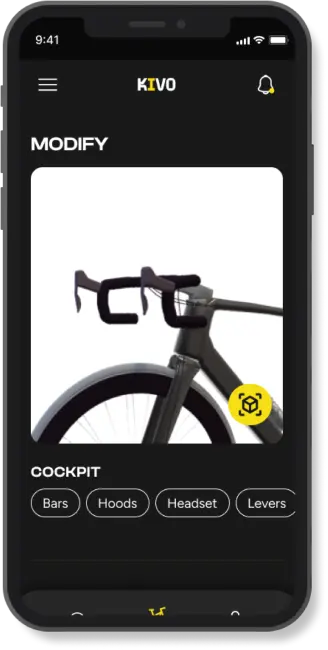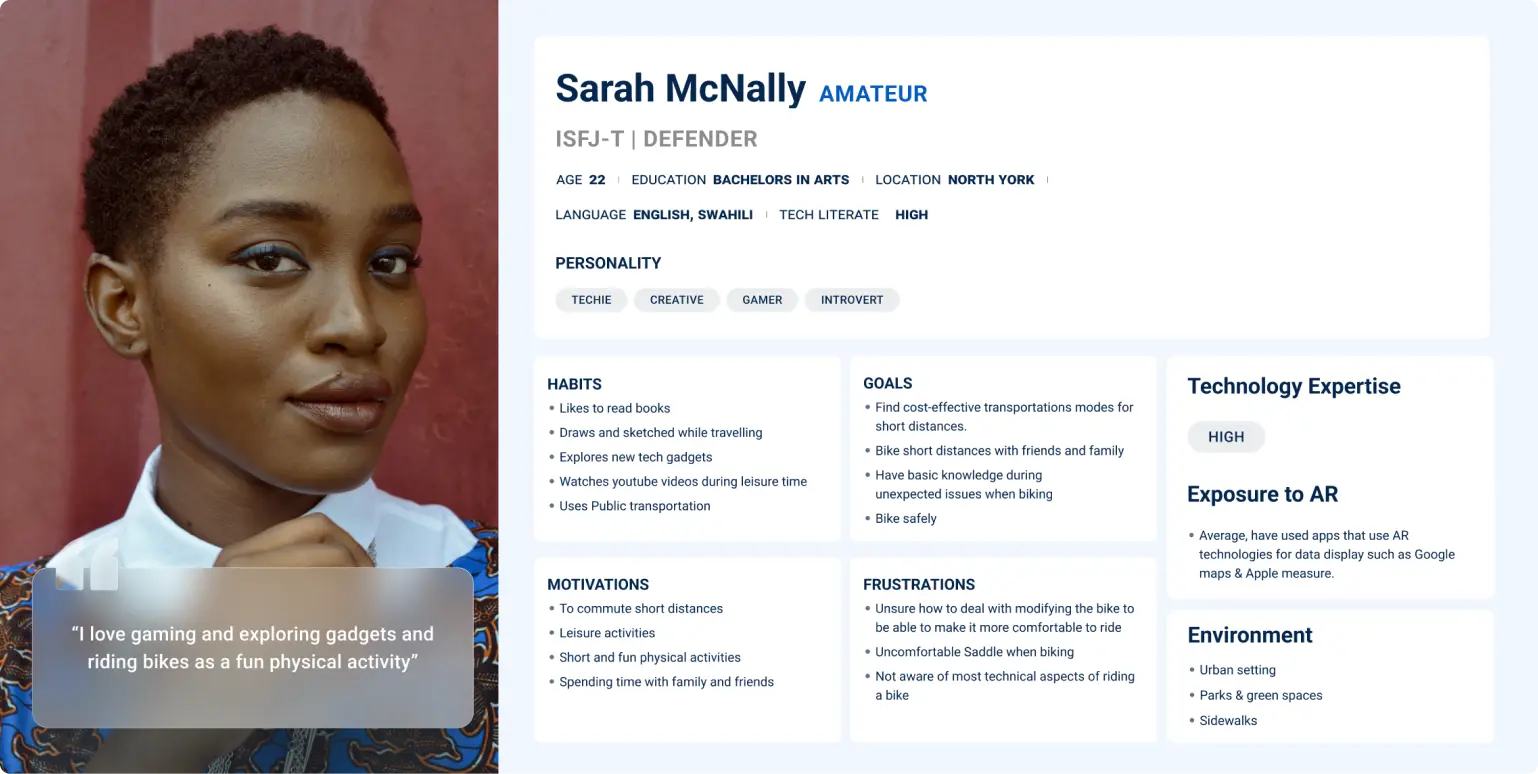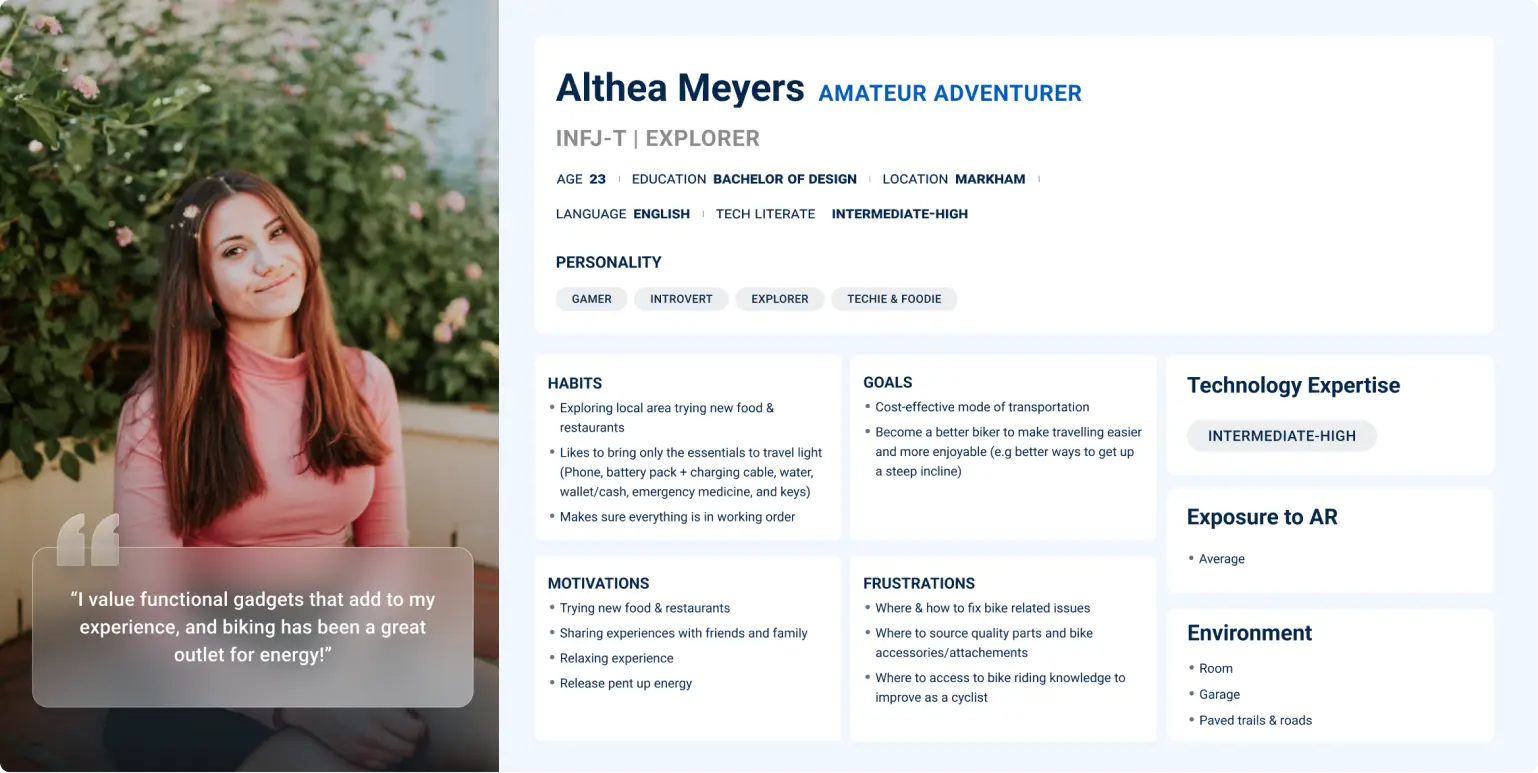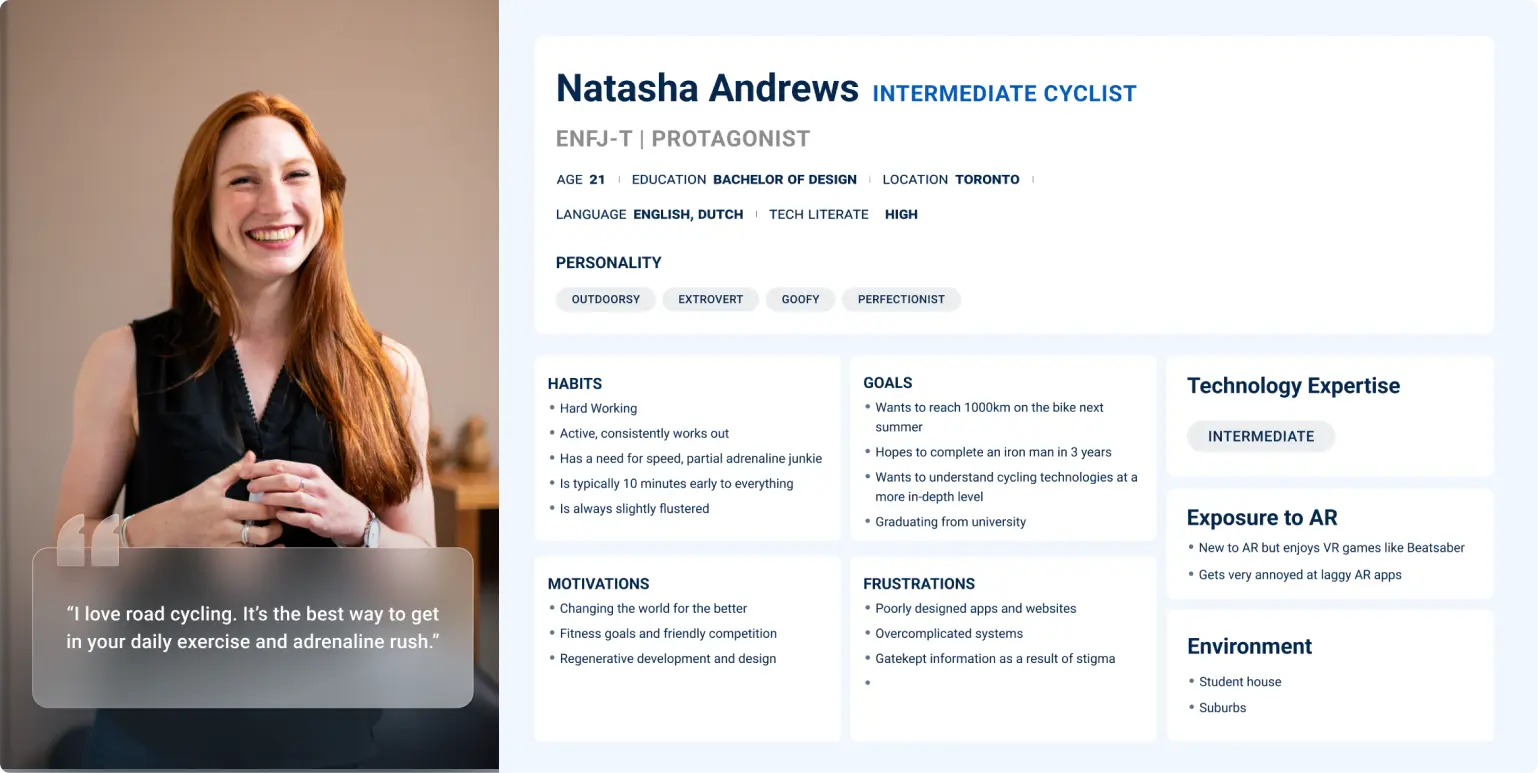KIVO: Cycling Learning Assistant
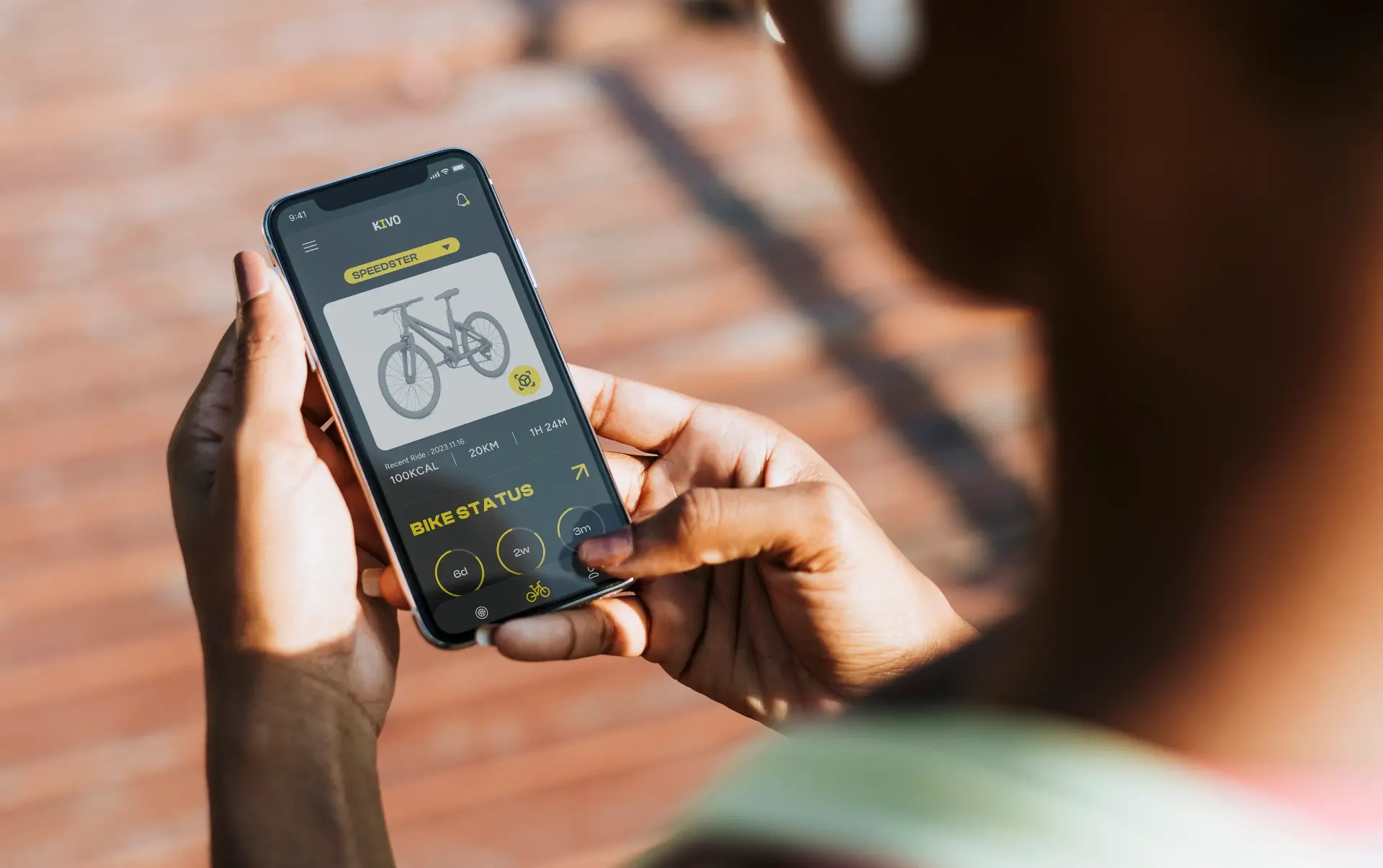
brief
The cycling industry faces accessibility issues in service and maintenance for cyclists due to gatekeeping practices, a lack of user-friendly resources, and complex bike part codes.
The Problem
High learning curve to proper cycling maintenance and practices making it challenging for new Cyclists, or becomes a barrier of entry for those interested.
Opportunity
Making cycling more approachable and welcoming for beginners, fostering a more inclusive and knowledgeable community.
Streamline processes, enhance accessibility, and improve knowledge-sharing within the cycling community.
Highlights
Research Methods
Maddy, our bike expert, provided valuable insights throughout the research phase.
We focused our data on the perspectives of casual and beginner cyclists. Primarily on four individuals identifying as female and under 5'5". These participants offering valuable representation of casual cycling experiences.
1.
2.
3.
4.
5.
6.
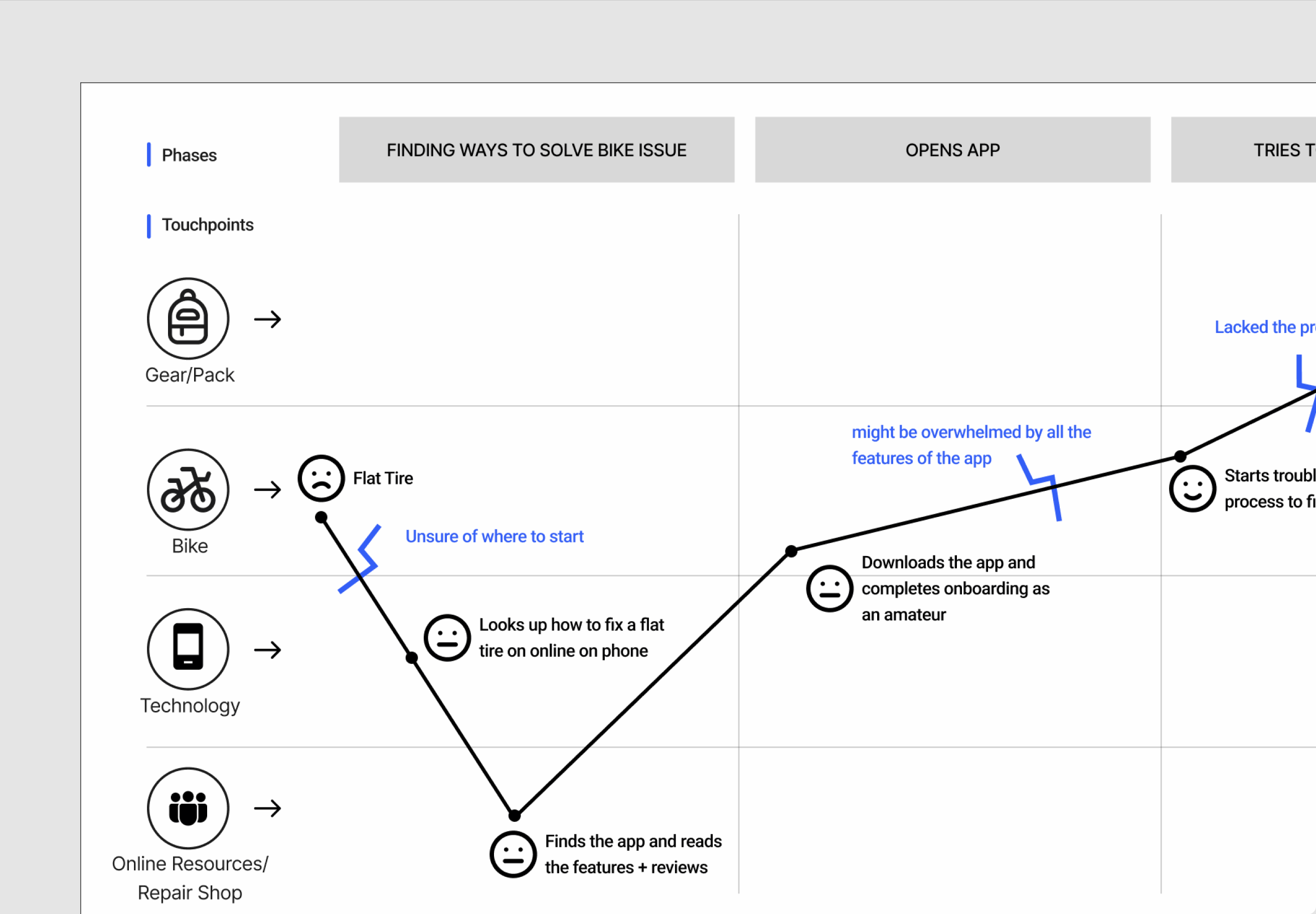
Research Findings
Motivations
Fears
Habits
Pain Points
Key Problems
Process
Our Approach
- Accessible resource allowing cyclist of all levels to learn about bike maintenance and technical issues
- AR tool: identify issues and provide an engaging experience
- Identify issues and assist with basic maintenance and repairs
- Direct and assist with communication with local shops if the issue exceeds app capabilities
- Database of parts showing their compatibility and purchasing options
Why Augmented Reality?
The main barrier is a lack of knowledge about bike parts and their names. Our research showed that visuals simplified the learning experience and made it more engaging for users.
Personas
Task Flow & System map
We created a system map to determine the app's organizational structure, which enabled us to identify six key task flows for our wireframes. From that point onwards, we continuously tested and iterated on our design.
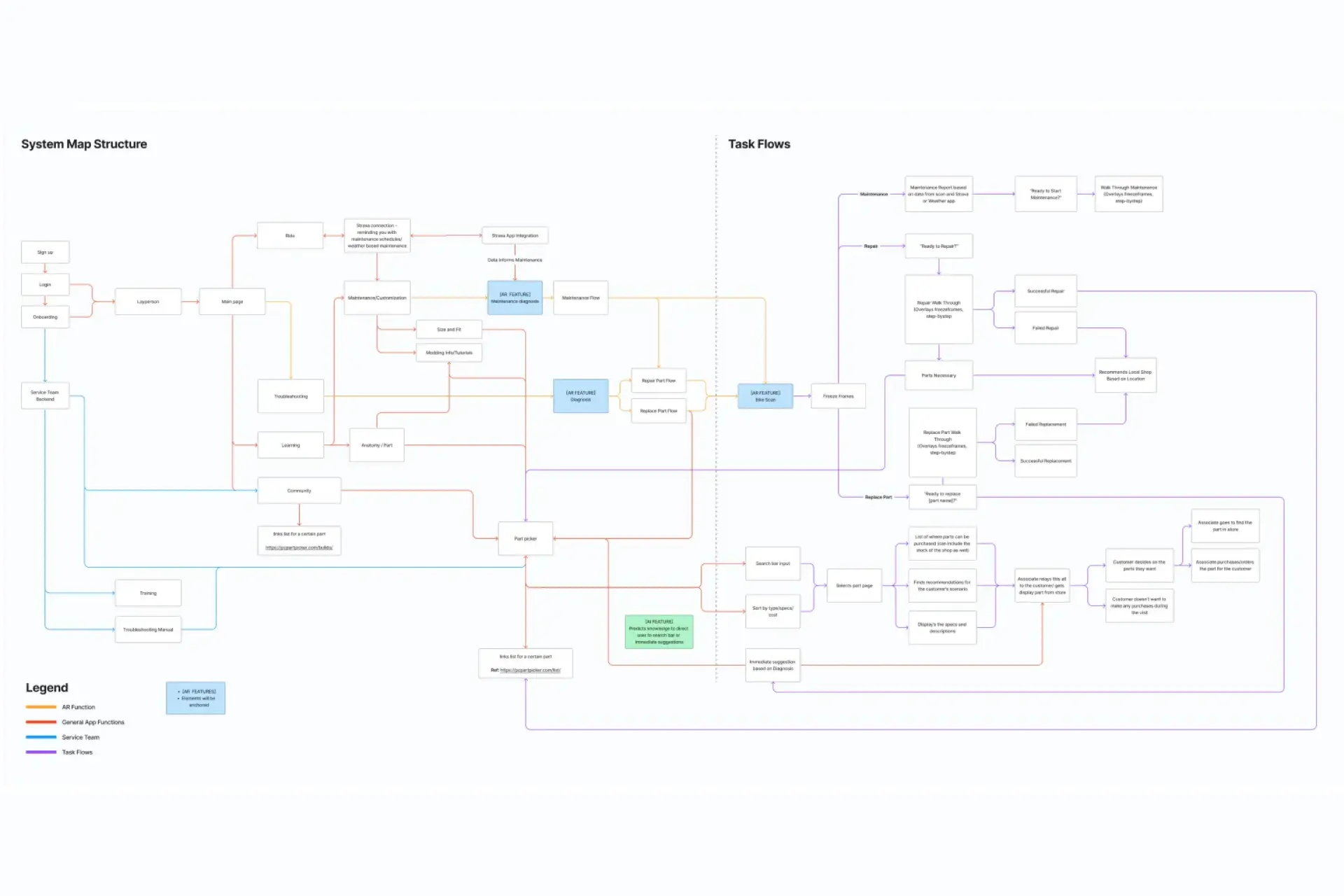
Solution
AR Learning Assistant
Kivo aims to enhance the bike maintenance experience across various biking activities by simplifying key skills through augmented reality (AR) technology. This approach visually educates users about their bikes, prevents tool misuse, and identifies errors during repairs. By addressing resource gaps, complex terminology, and the lack of an organized bike parts database, Kivo provides comprehensive maintenance guidance, ultimately improving bike upkeep.
App Prototype
View Prototype01 — Home Screen
The app uses weather and Strava APIs to display metrics and send maintenance alerts on the homepage. Page formats adjust to user experience levels. It identifies knowledge gaps and prompts educational modules.
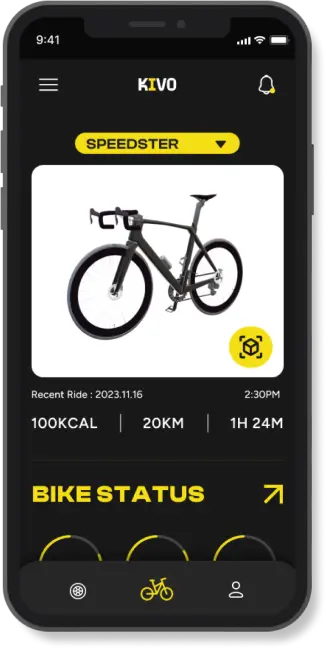
02 — Maintenance
Kivo's maintenance feature uses Strava and weather data to prompt bike upkeep, educating beginners and assisting experienced cyclists to prevent breakdowns and costly repairs.
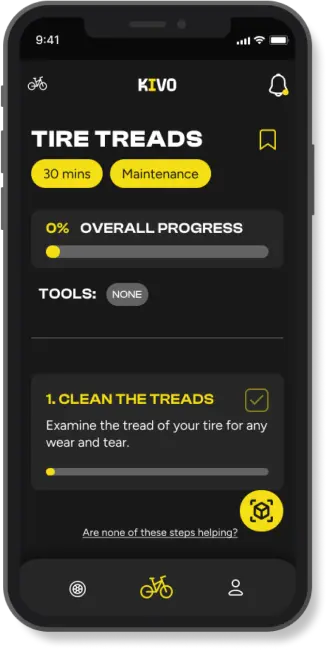
03 — Repairs
The repair feature in Kivo app uses AR and tutorials to fix issues. Complex problems prompt users to visit a bike shop for assistance.
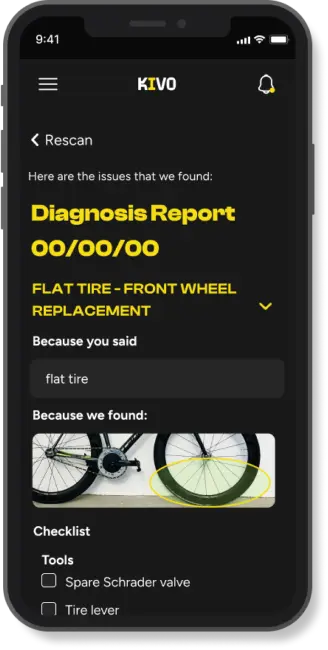
04 — Learning Module
Kivo's learning module is user-friendly, using AR to identify bike parts specific to the user's bike.
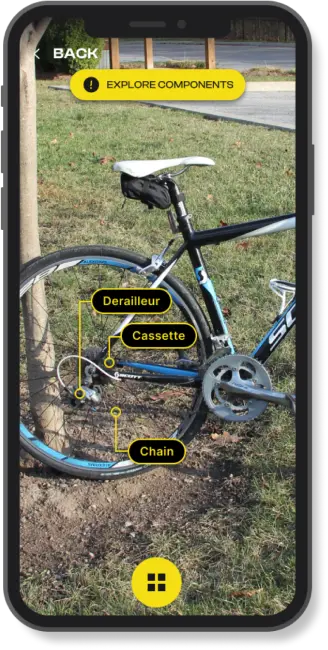
05 — Modify
Kivo's modify feature lets users search for compatible bike parts and preview them in their bike's context, with a parts index and purchase directions.
